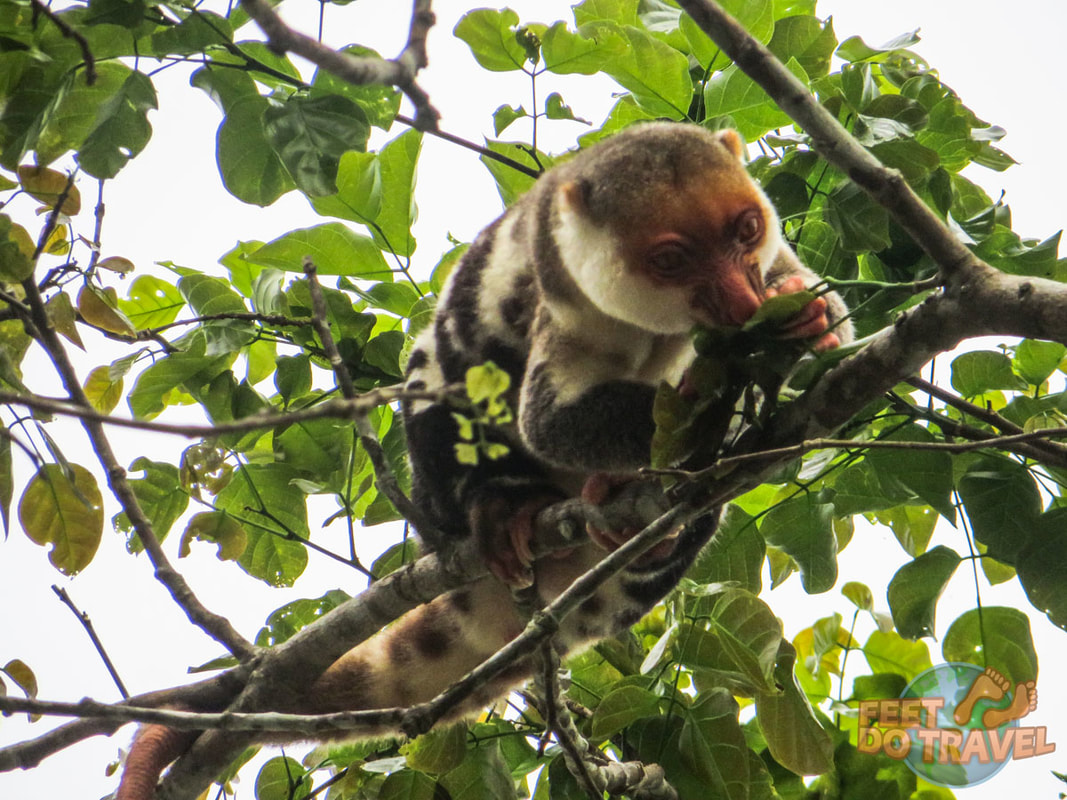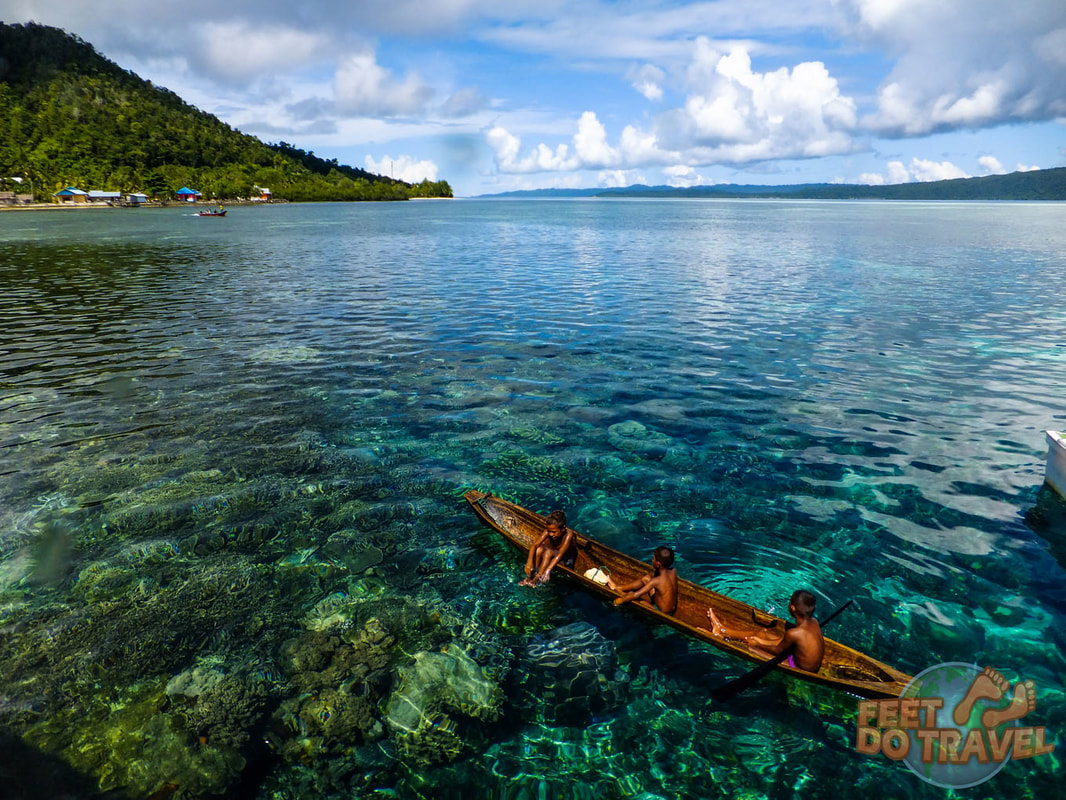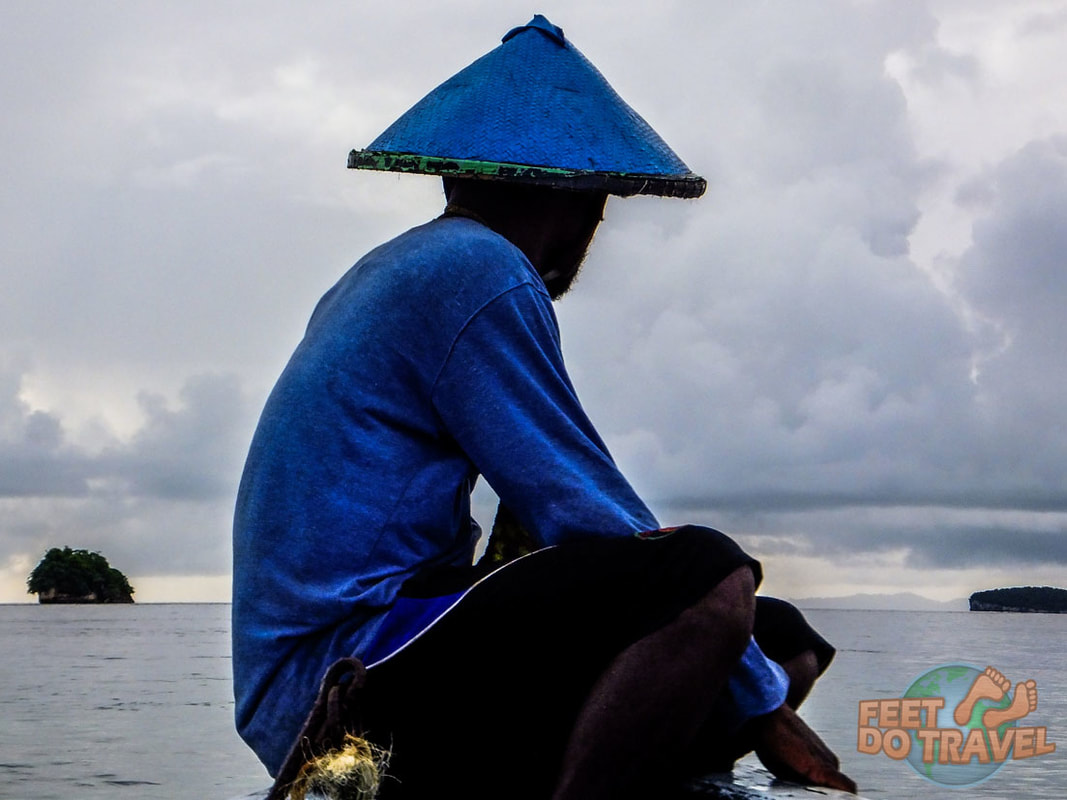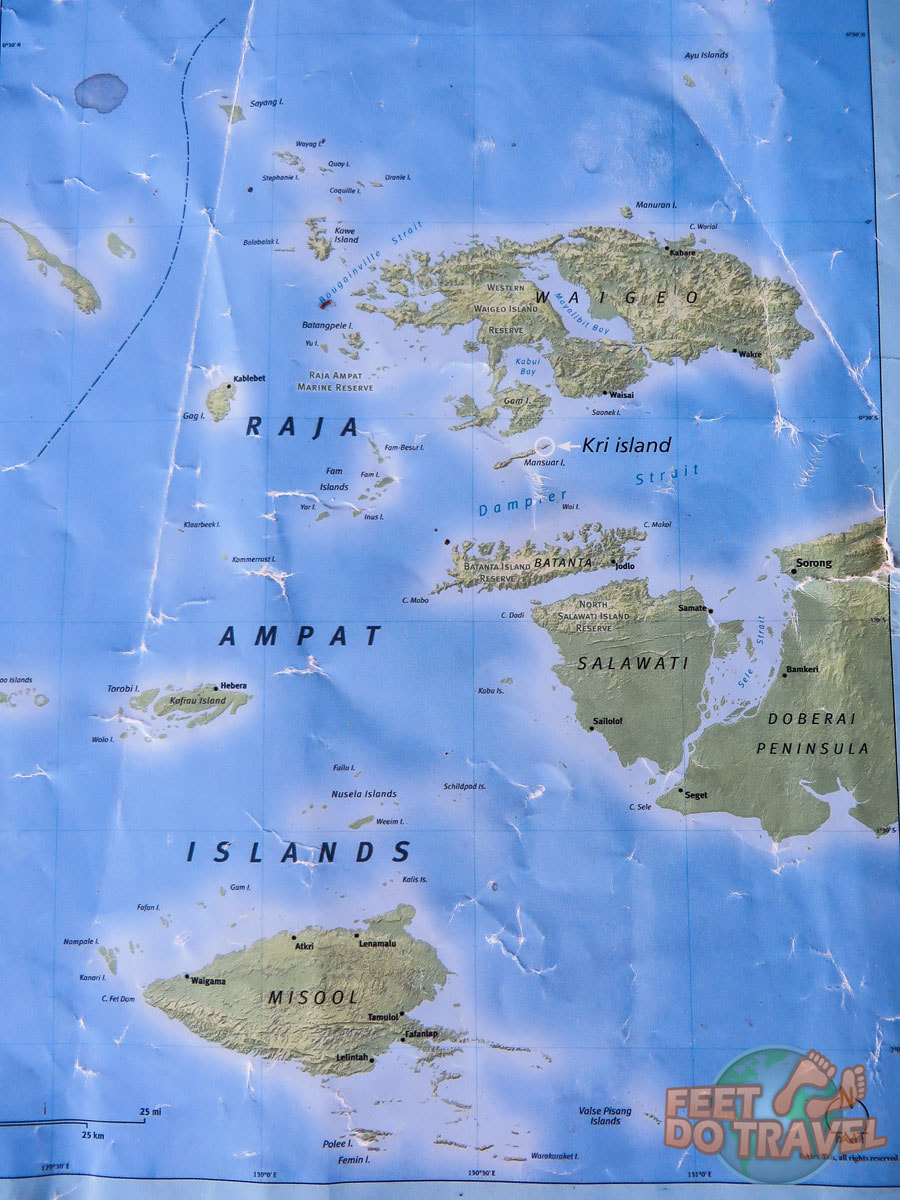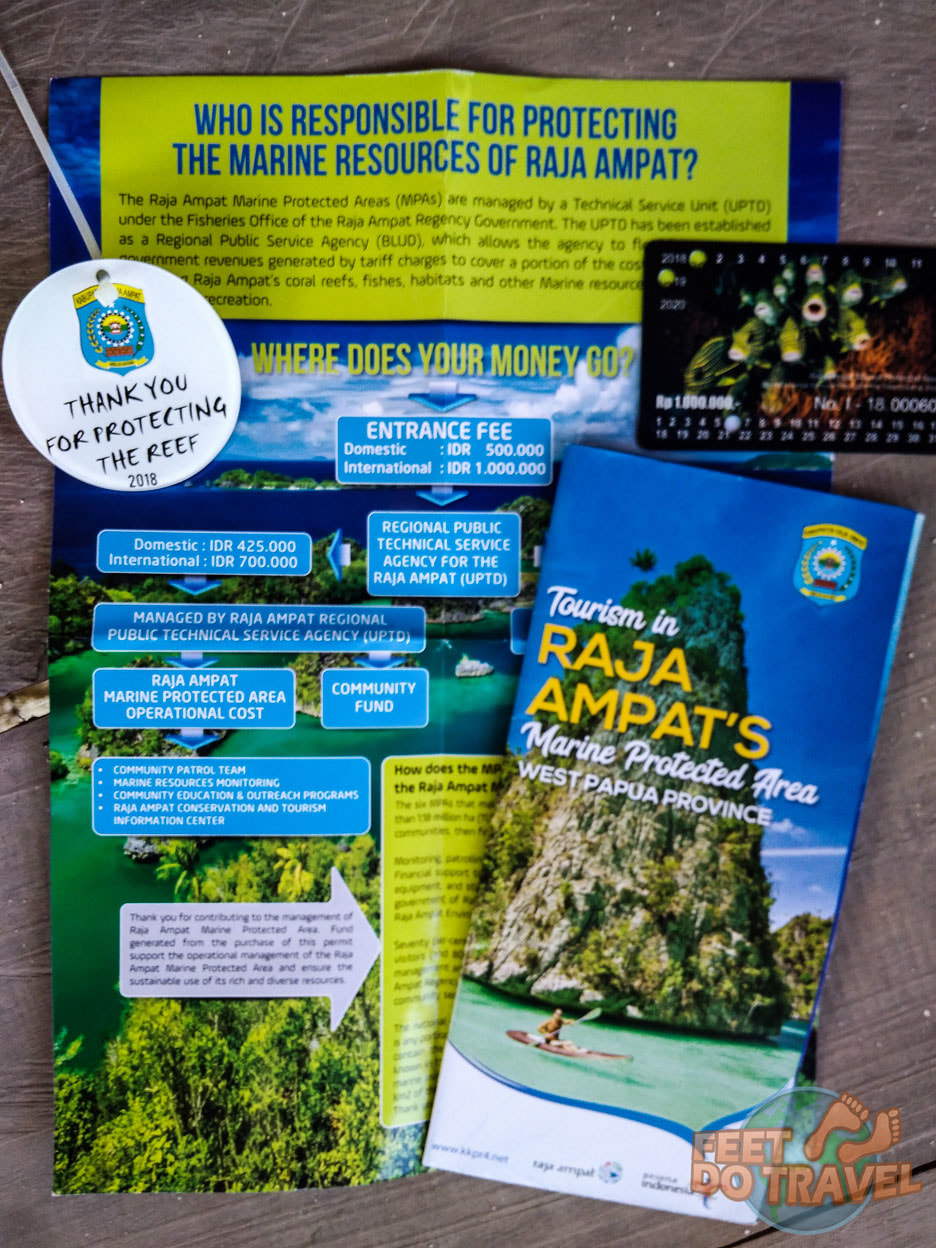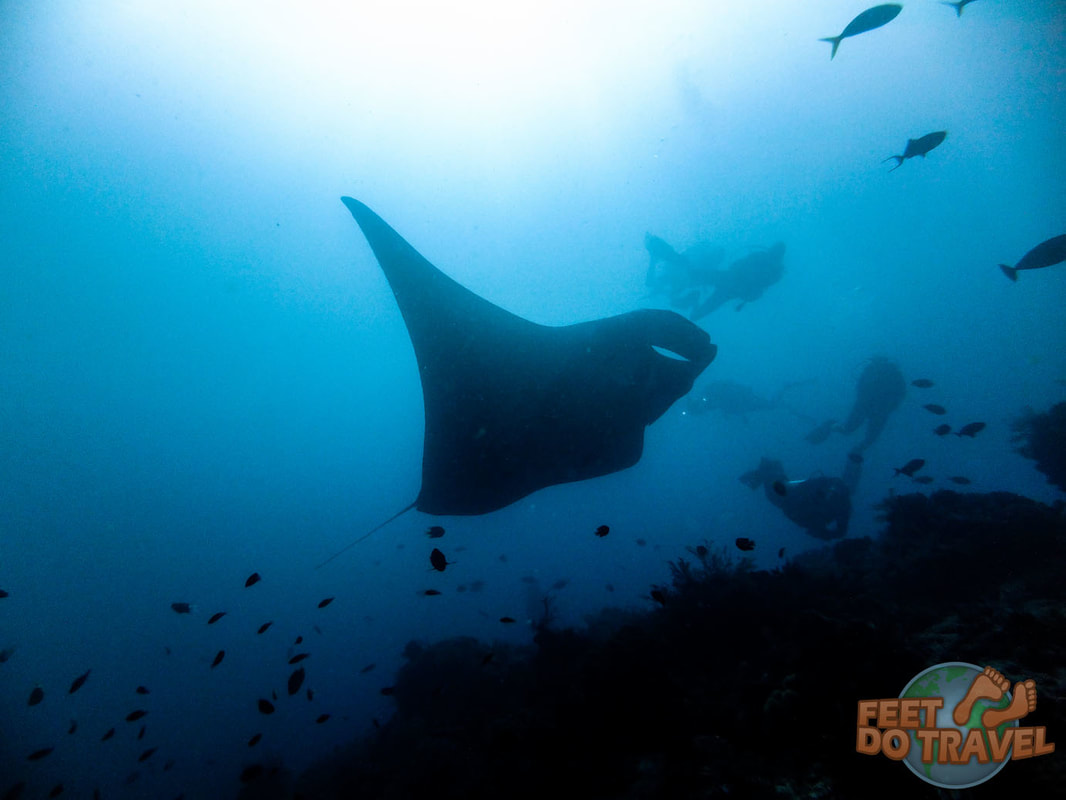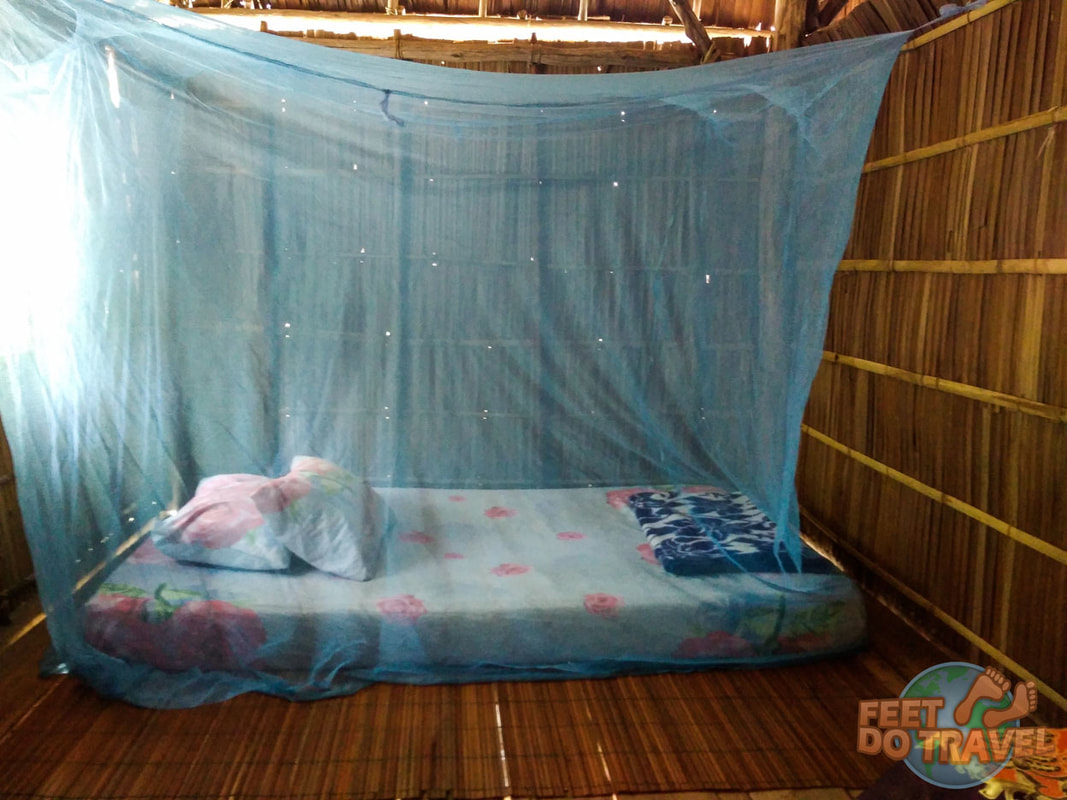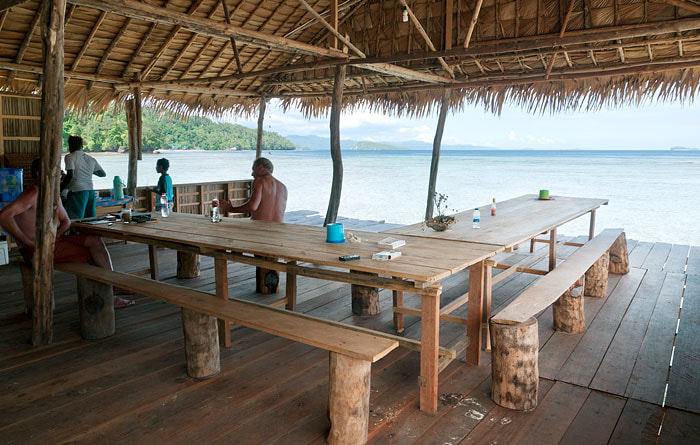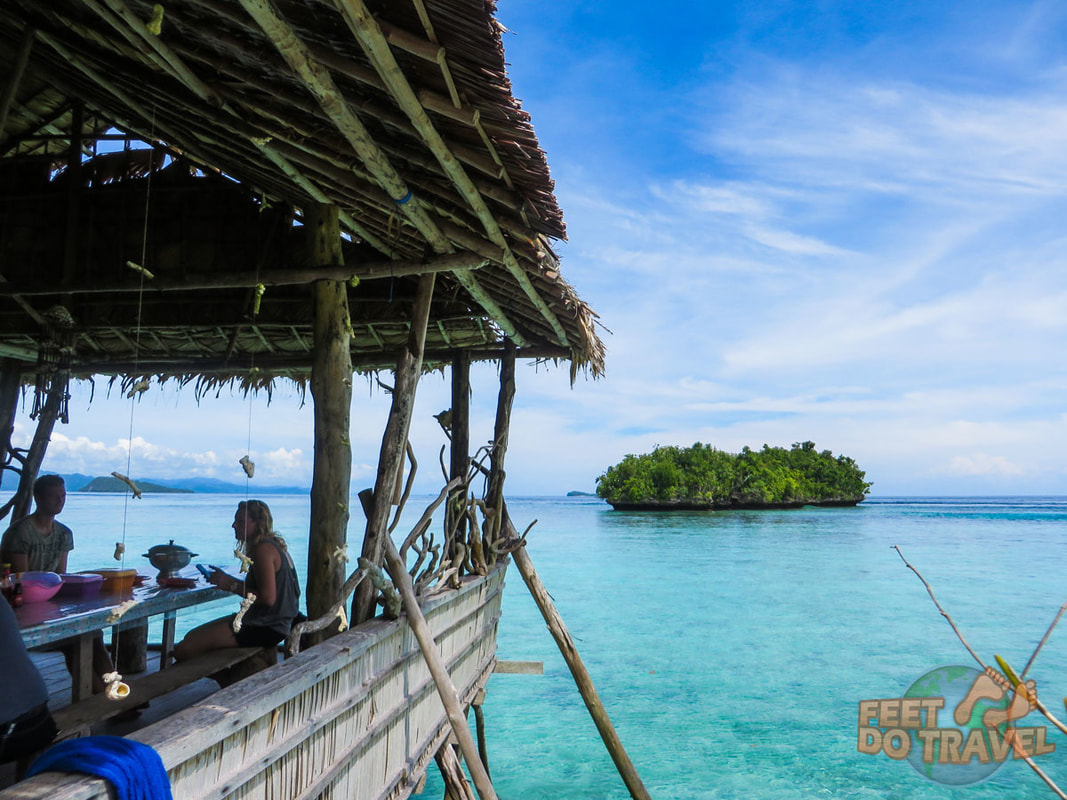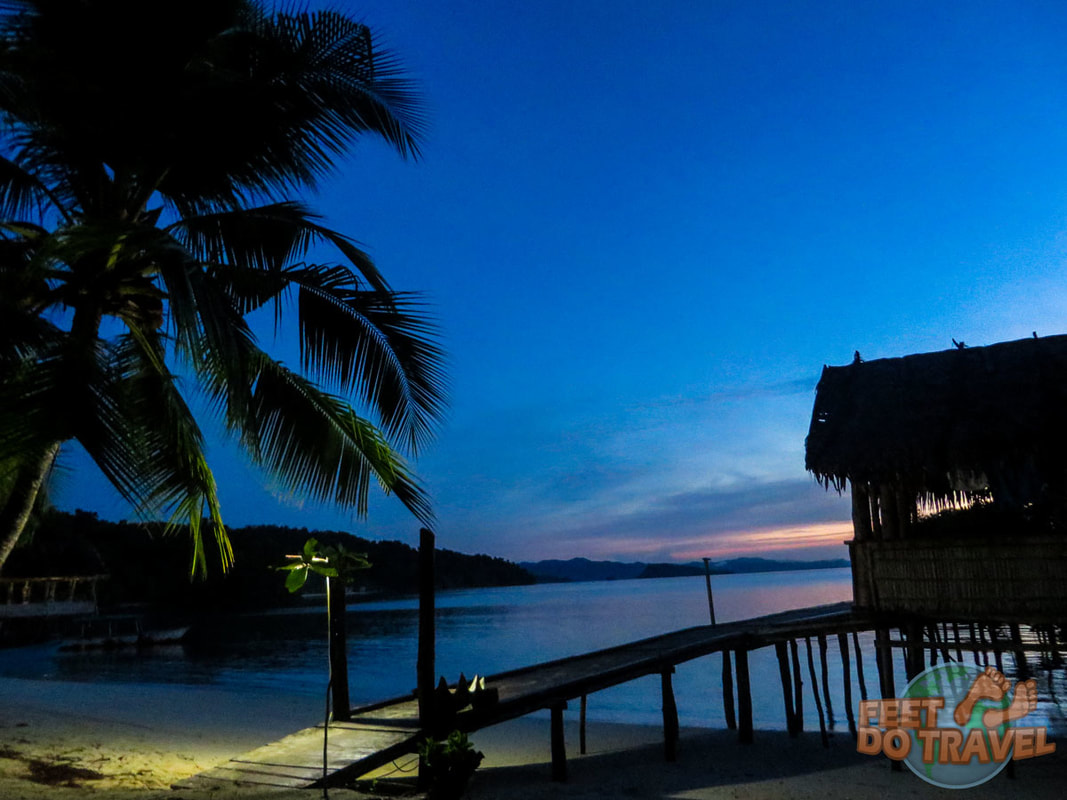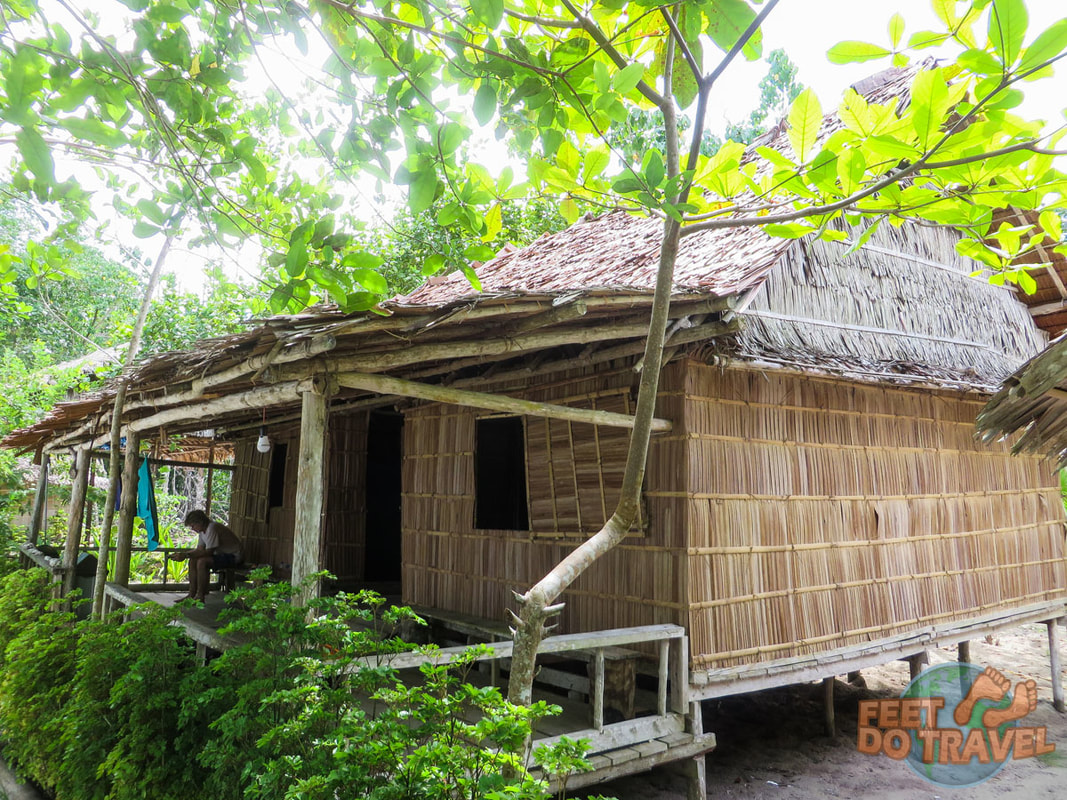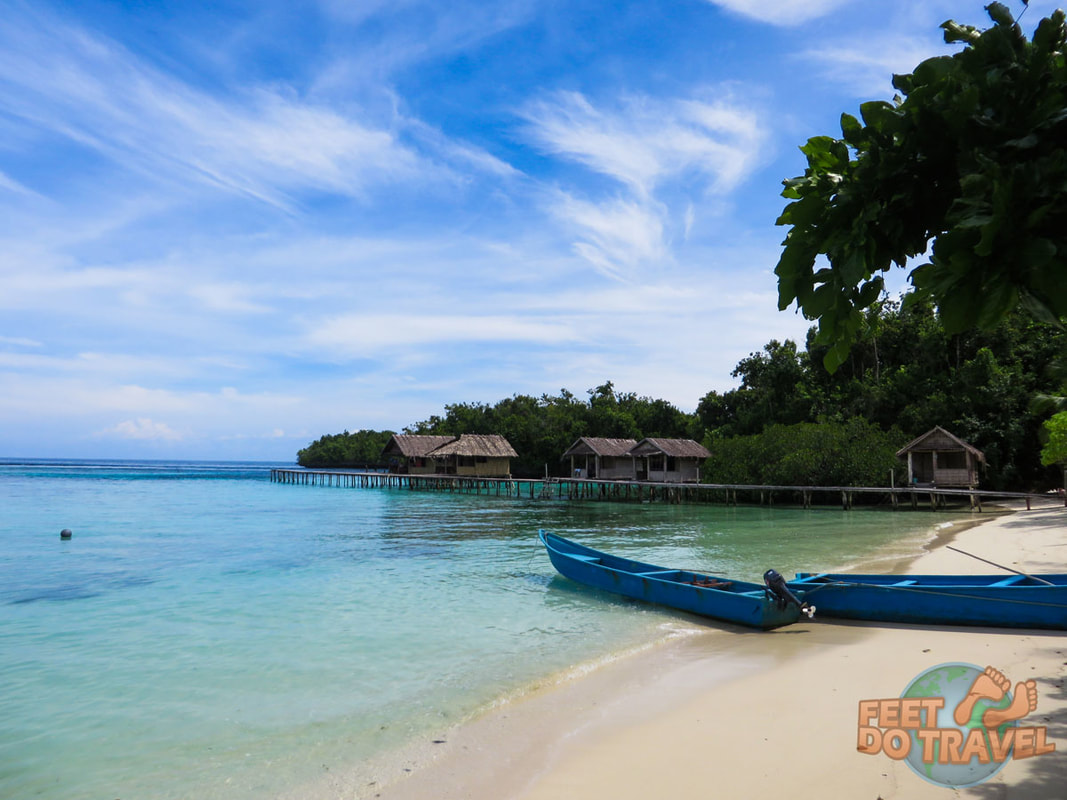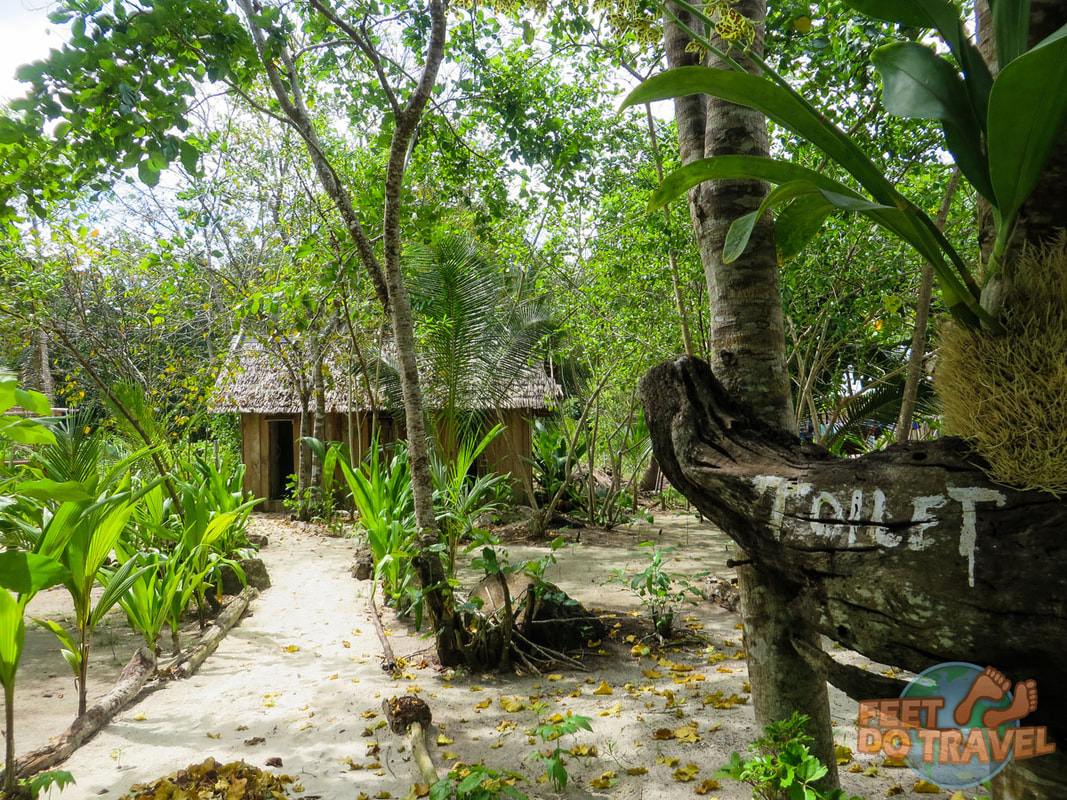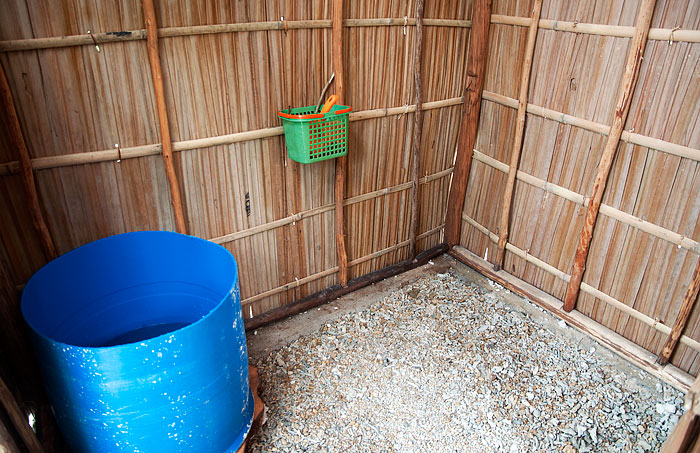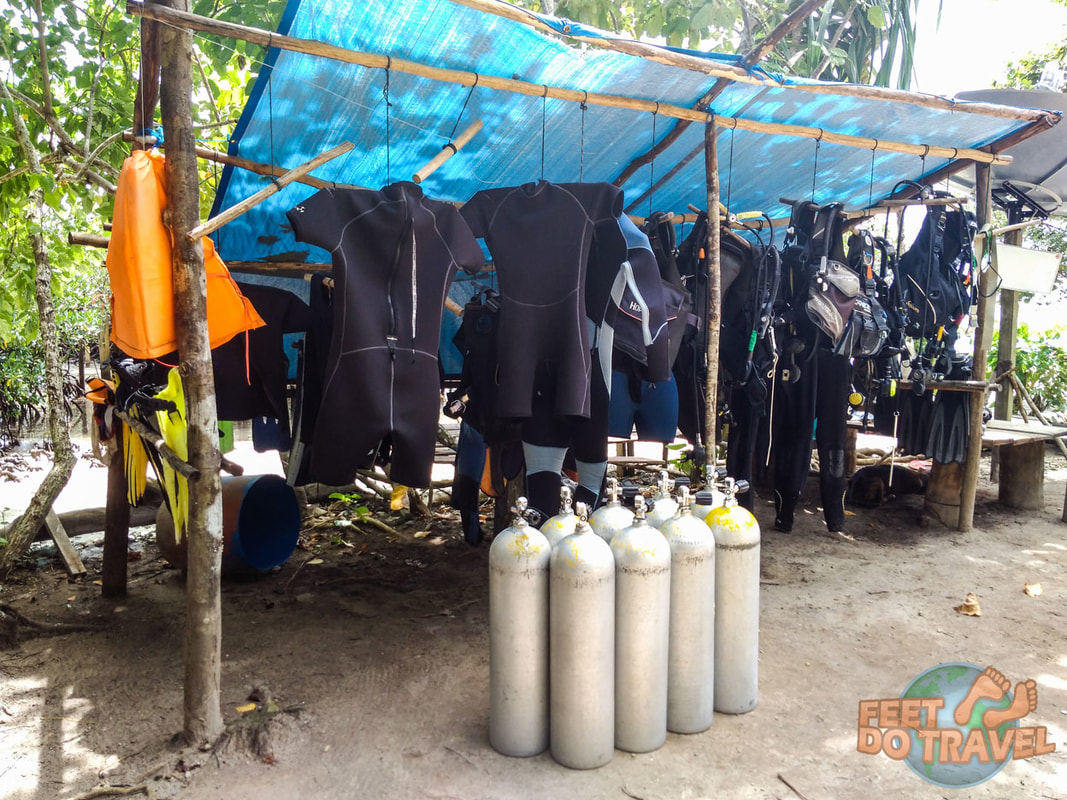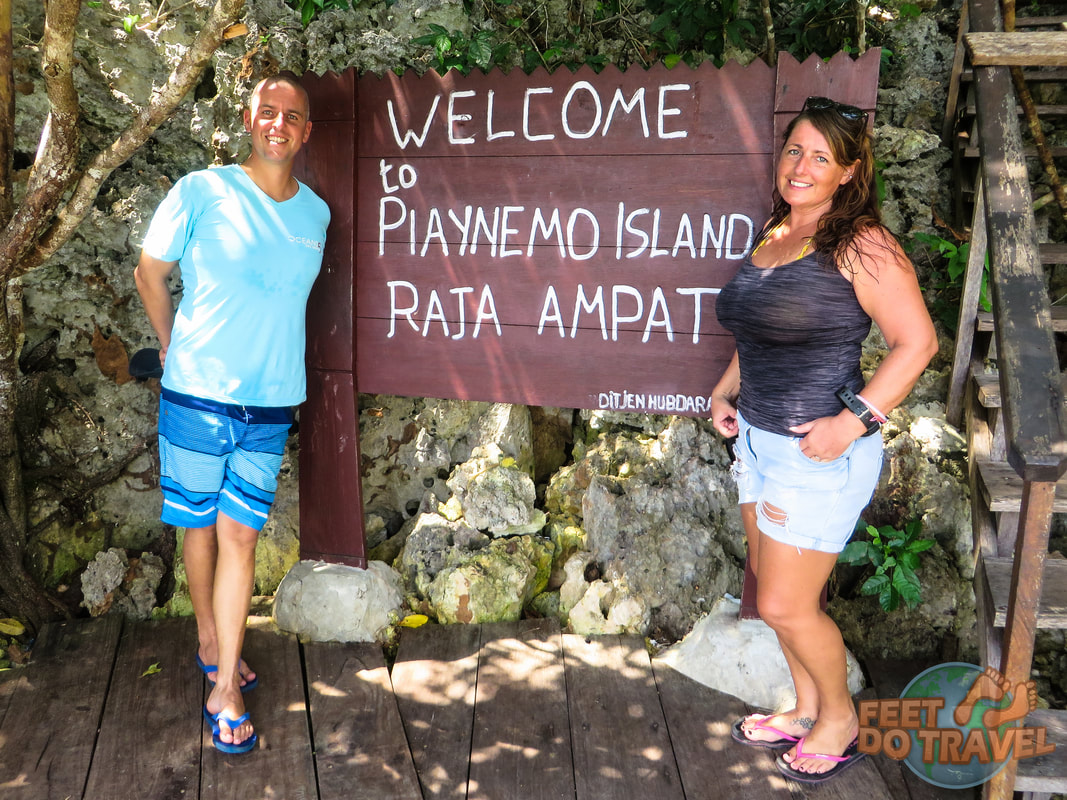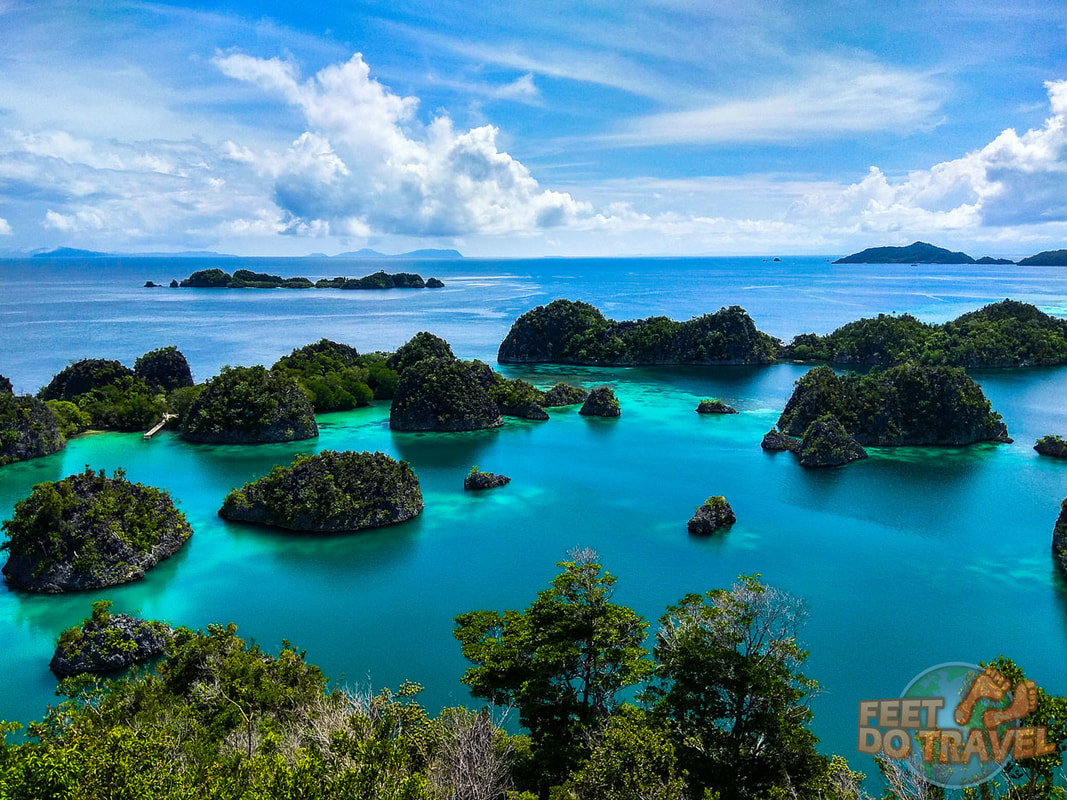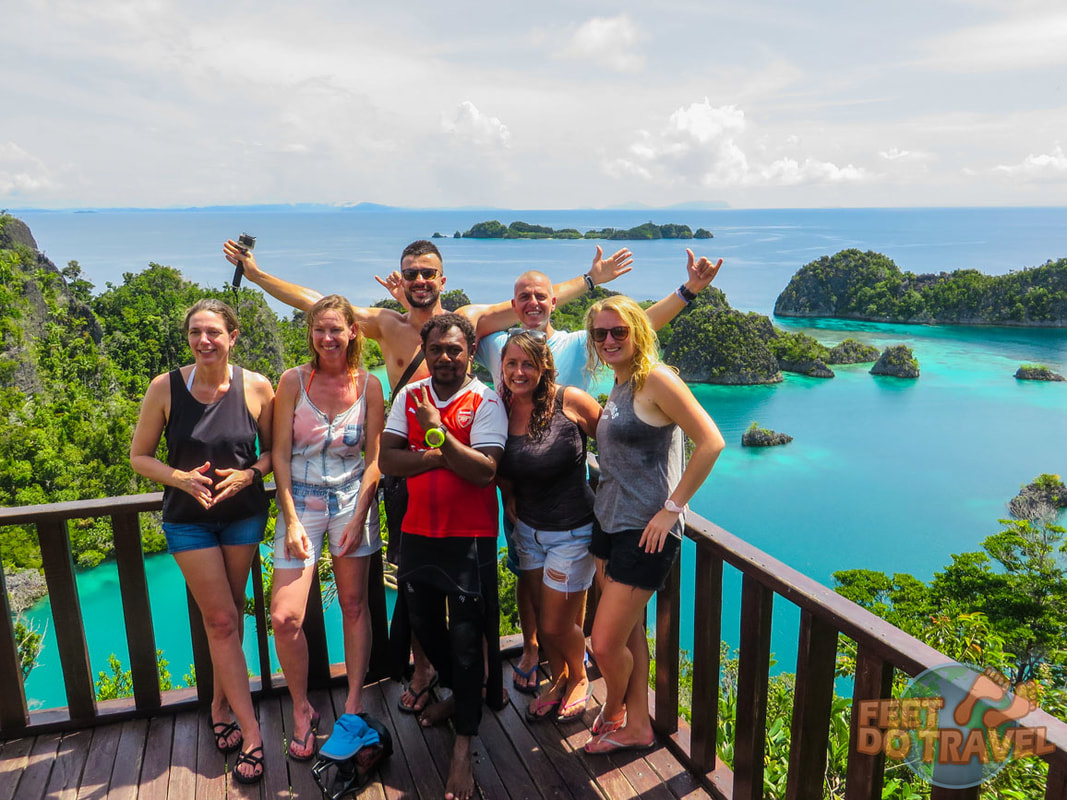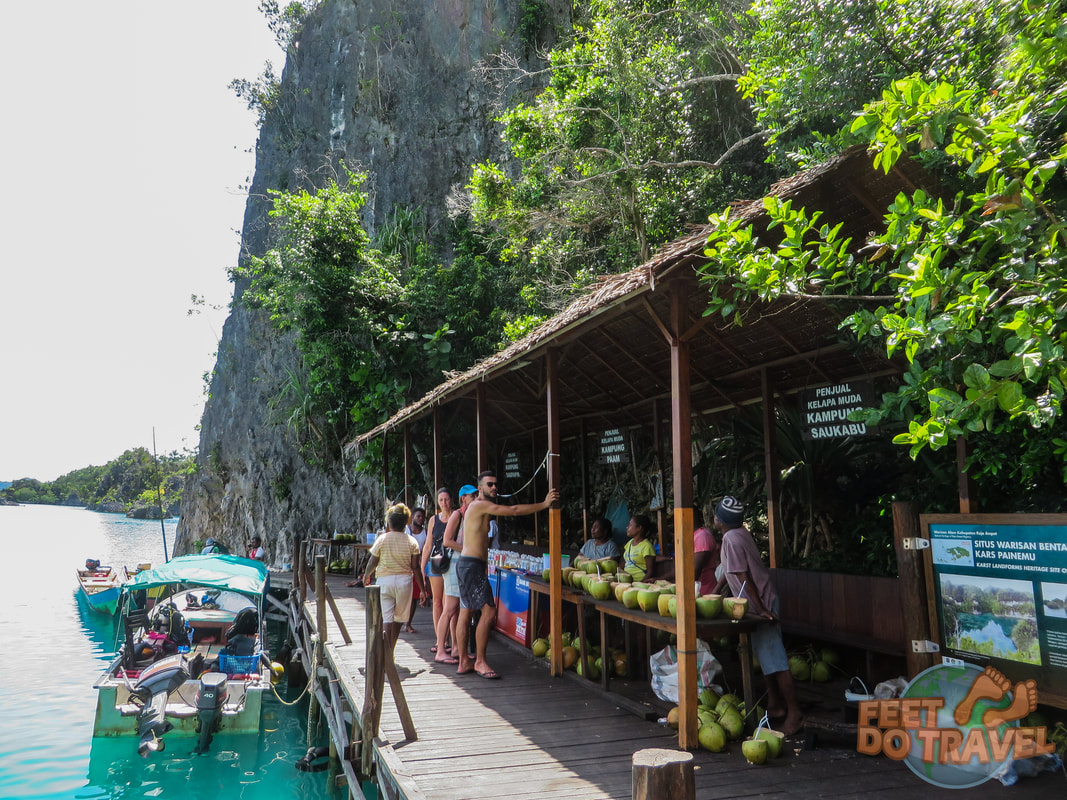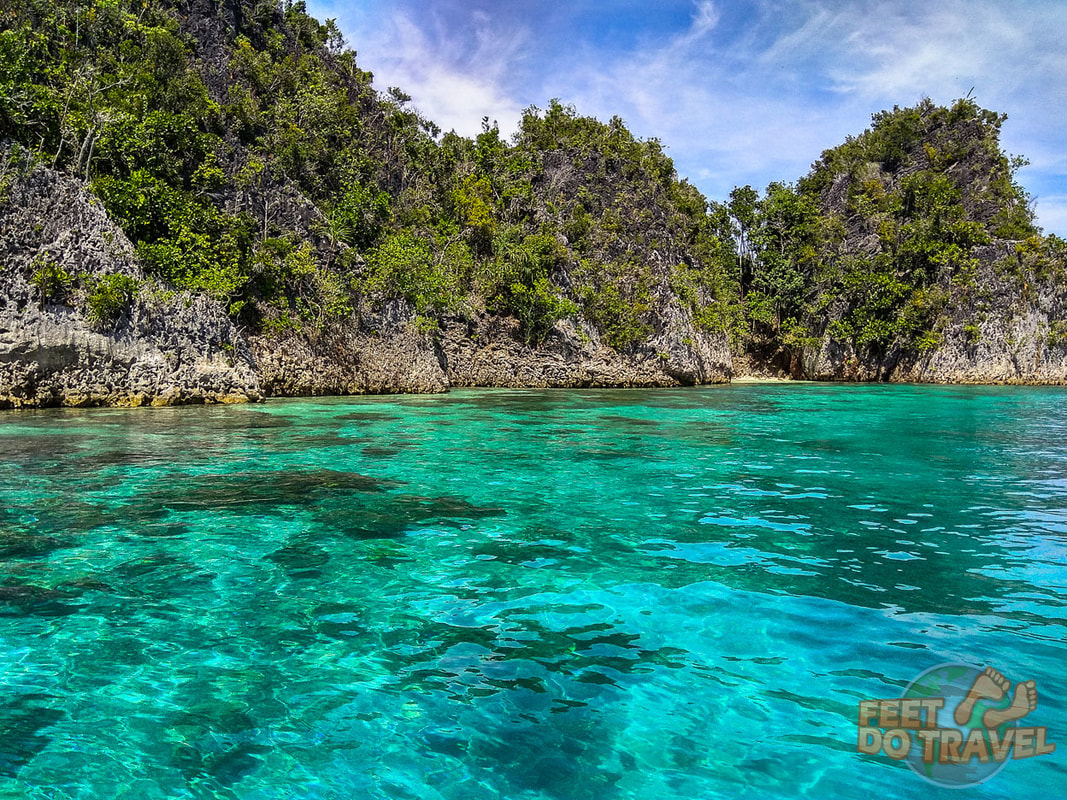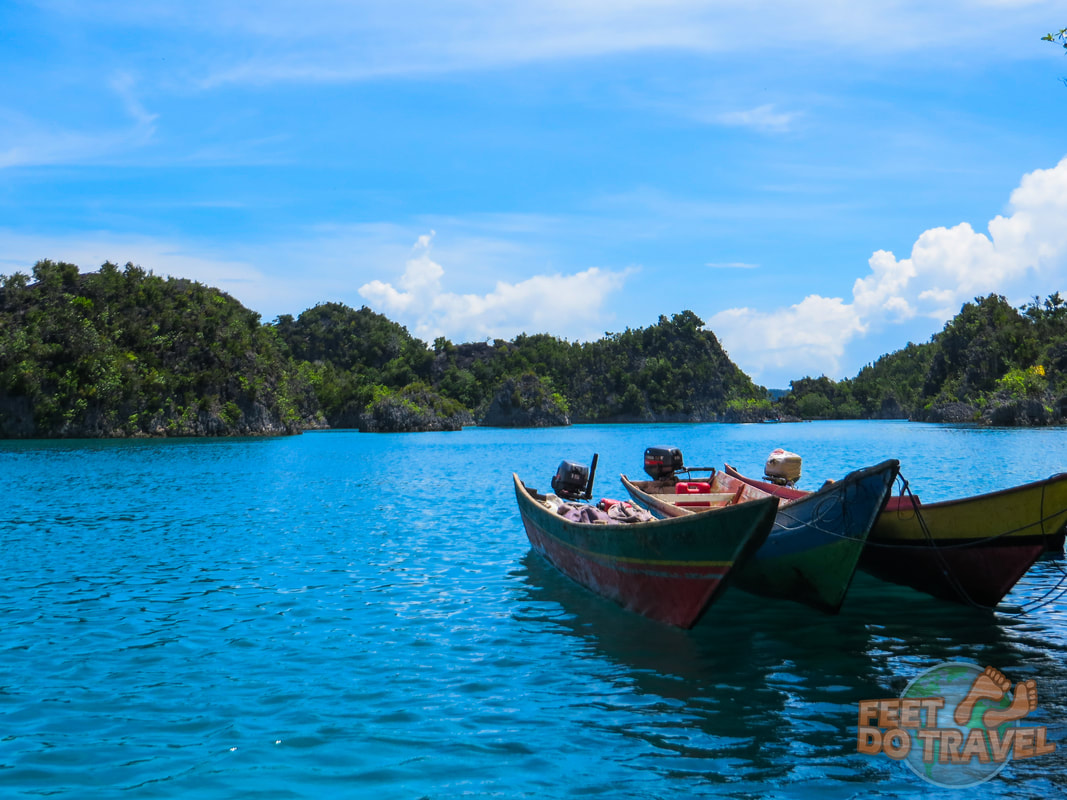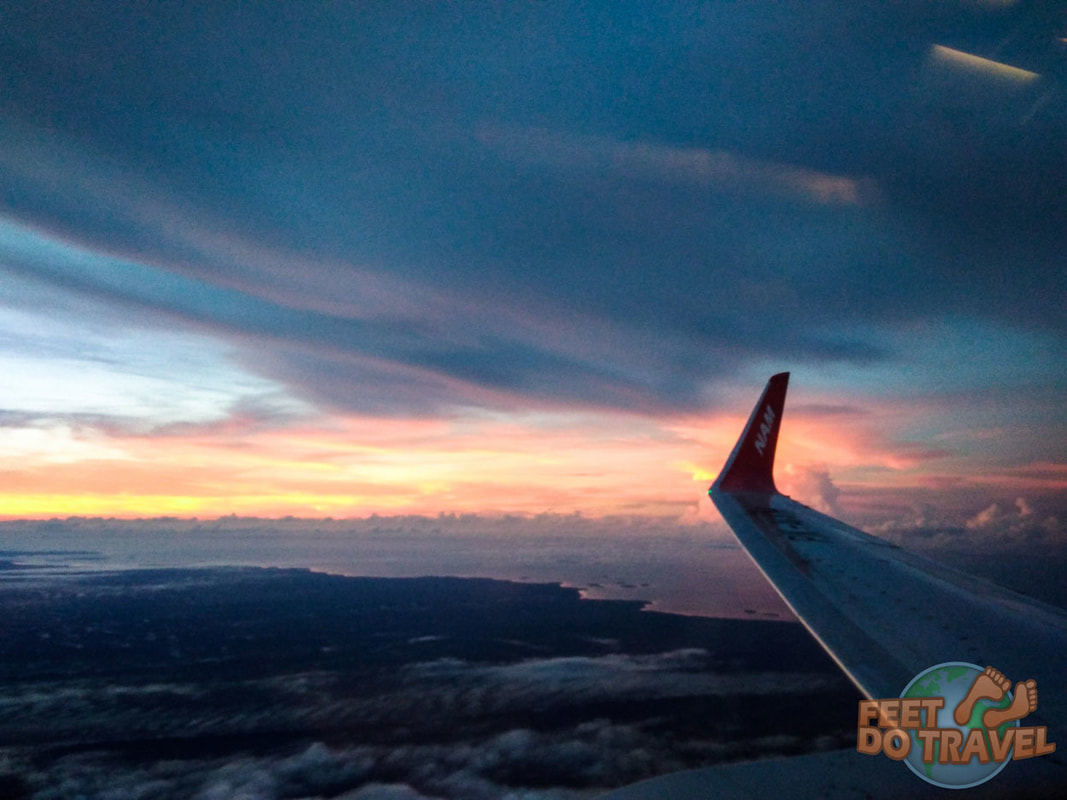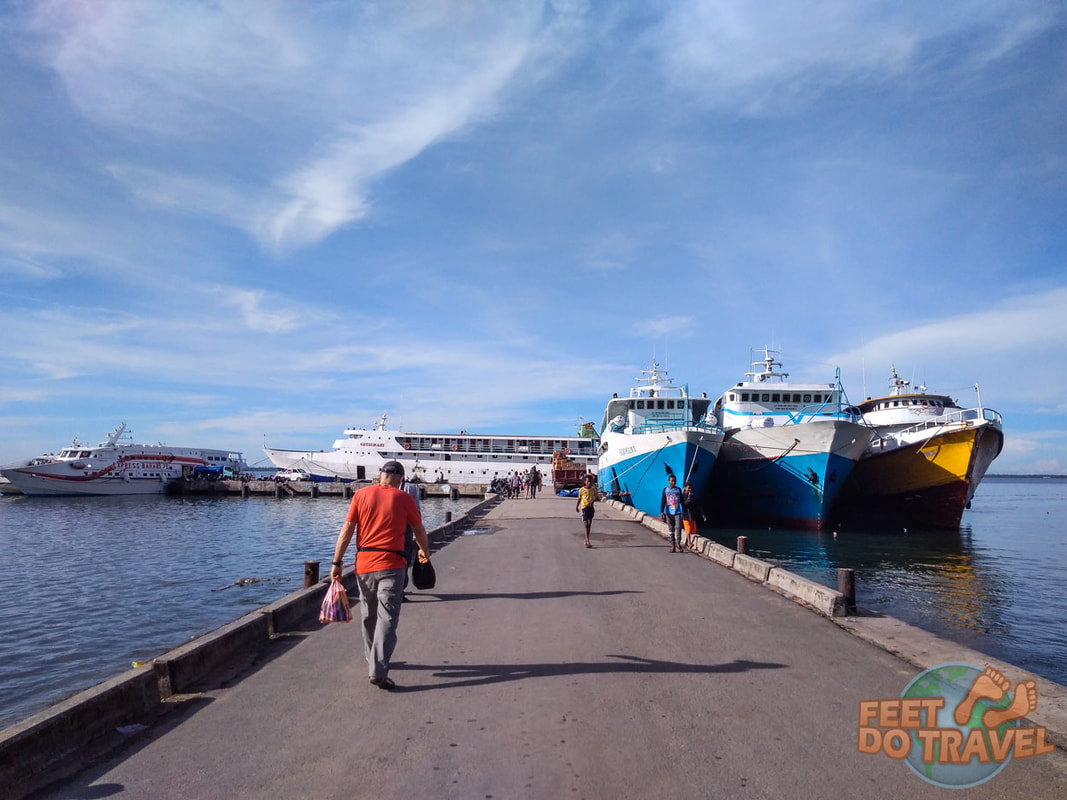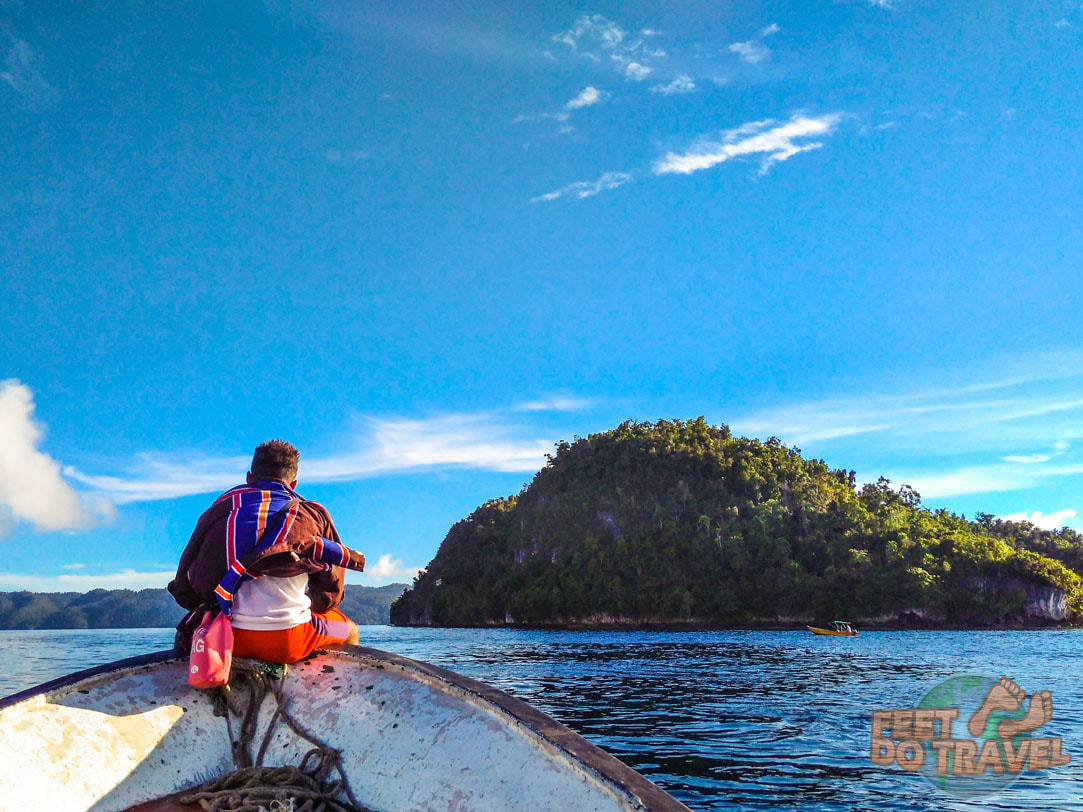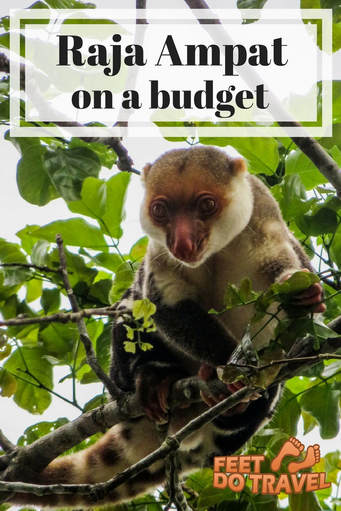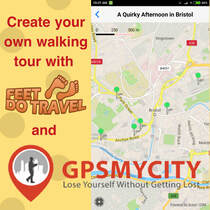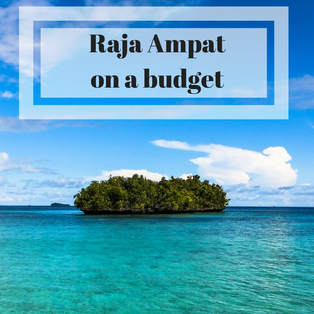
It is, however, notoriously difficult to reach which is a good thing, after all, if paradise is to remain that way, you don’t want it to be easily accessible. It is also expensive in comparison to other Indonesian destinations due to its location in the far east of the Country, next to Papua New Guinea. Is it possible to visit Raja Ampat on a budget?
Let me help you visit this slice of heaven on earth for only a fraction of the cost.
Raja Ampat isn’t just for water lovers such as scuba divers, freedivers, snorkelers or kayakers, it’s also a haven for nature lovers. Exotic birds of paradise such as parrots, cockatoo, and hornbills can be spotted in the trees or flying overhead. Jungle trekking provides an opportunity to see waterfalls, crystal clear rivers, prehistoric sites plus many rare animals and plants endemic to Waigeo. We found a Waigeo Spotted Cuscus in a tree grazing on leaves, I had never even heard of this marsupial bear-type-rat until it was pointed out to me.
We are scuba divers so if you want to know what you can see underwater as a diver, snorkeller or freediver, check out our post Diving Raja Ampat. For information regarding trekking, kayaking, bird watching activities and various other non-diving activities, look at the www.StayRajaAmpat.com website.
When we were researching our visit, we found it very difficult gathering all the information we needed for independent travel. Liveaboards are the ultimate way of seeing this vast area but not everyone can afford this, so I wanted to show that Raja Ampat is accessible for anyone. I have written this comprehensive blog post in the hope that you won't need to spend hours and hours researching for your trip, you just need this guide!
Read on to find out how to visit this region on a budget.
Raja Ampat statistics in a nutshell:
- A Marine Protected Area; Of its 4 million hectares, 1,358,170 hectares are protected
- Strictly NO touching or stepping on corals, NO fishing/spearfishing, NO feeding of animals, NO littering, DO NOT take home any shells or corals whether they are dead or alive
- Located in the heart of the Coral Triangle and global epicentre of marine diversity
- It has the highest coral reef biodiversity of any area it’s size in the world boasting more than 550 species and 75% of all known coral species
- 1,470 species of reef fish
- Protected species: all sharks, all manta rays, coconut crabs and sea turtles
- The islands of Sayang and Piai are home to nesting Hawksbill and Green turtles. Females come ashore between March and June almost every night
- 12 endemic animal species found nowhere else on earth
- Over 250 bird species have been recorded across the islands including seven endemic species
- Jellyfish Lake in Misool (in the south) is one of the world’s unique lakes with stingless jellyfish which you can swim freely with (without getting stung!). We did this in Kakaban when we visited Derawan, Indonesia
- Main religion: Christianity and Islam
For this blog post I have broken down all the different elements that you will need to consider when booking a trip to Raja Ampat, together with the costs. At the end of the post, all the costs have been added together for you to view at-a-glance.
- Location: Far east Indonesia in the West Papua Province (near Papua New Guinea)
- There are over 1,500 small islands and islets in this archipelago covering at least 40,000 sq km
- There are four main islands, Waigo (north), Batanta and Salawati (central), Misool (south)
- You will arrive in Sorong at the only main airport on the island of Salawati
- Wasai on Waigo is the capital of Raja Ampat. It’s a major port, the administrative capital and gateway to the islands
- Express ferries run twice daily from Sorong to Wasai and Wasai to Sorong at 9am and 2pm and take approx. two hours
- If you want to head south to Misool you will have to take an “overnight” ferry. They depart Sorong Monday and Wednesday at 11am and will take around nine hours (contact Mr Aco +62 852 3018 9203)
With so many islands to choose from, how do you go about finding where to stay? Let me break it down for you.
|
The only way to get between islands is by boat and petrol prices are unreasonably expensive, mainly because of the cartel which controls fuel distribution in the islands. The cost of fuel in Raja Ampat is almost double the national government mandated (and subsidised) price. To keep costs down, it is advisable to choose a homestay on an island close to the places you wish to visit. The islands off Wasai have the most accommodation and dive centre options because of this reason. If you have been quoted a boat fee and think it’s unreasonable, have a look at www.StayRajaAmpat.com's extremely helpful website. |
|
Islands which are 30-60 minutes from Wasai are Kri, Gam, Friwin, Mansuar and Arborek. If you are visiting to dive, Kri and Arborek have reputable dive centres and homestays which receive rave reviews on the Stay Raja Ampat website and Trip Advisor (I will talk about this in more detail later).
From the harbour in Wasai, your chosen accommodation will pick you up and take you to their island for a fee. You will need to purchase a Marine Park Entrance ticket which costs 1,000,000 IDR. If you are picked up from Wasai, when you disembark at the port you will see a tourist information area where it can be purchased. You will need to show them your passport and the ticket is valid for one year. |
Choosing your accommodation
Visiting Raja Ampat on a budget basically means anything cheaper than a live-a-board which is the ultimate way of seeing this vast area. A live-a-board boat is your means of transport which generally cover north and south islands; It’s your all-inclusive accommodation and your dive centre. You will undoubtedly have an amazing experience, but they are also expensive. This means there are different levels of budget ranging between basic homestays (of which there are over 70), to the highly rated Kri Eco Resort and Papua Explorers Dive Resort. Many homestays offer diving but safety standards and equipment maintenance can be questionable, we found this out the hard way despite reviews suggesting otherwise. If you wish to know more about diving in the north, please read our post Diving Raja Ampat.
Rooms are basic but not as cheap as similar accommodation elsewhere in Indonesia or SE Asia. Homestays will provide a room with a mattress, mosquito net and simple (often shared) bathing facilities. There will be little or no internet, sometimes using the data on our Indonesian SIM Card didn’t work either so bear this in mind. If air conditioning, internet connection, western style showers, non-communal eating or guaranteed insect-free rooms are important, homestays probably aren’t for you.
Generally, all meals are included in the cost of your stay and served in a communal area where everyone eats together. There are no other restaurants or small snack shops on any of the smaller islands. Fish is the main source of protein served at almost every meal so if you are a vegetarian, vegan or don’t eat fish, just let your homestay know. Rice and vegetables are also served, sometimes tofu, tempeh, chicken or eggs. Unlimited tea, coffee and bottled water are generally available, but other soft drinks and beer will not be served so bring them from the mainland if you want something else.
There are plenty of homestay options to choose from on the Stay Raja Ampat website . If you would prefer to stay in a resort you will need to visit their websites directly; Kri Eco Resort, Papua Explorers Dive Resort or Raja Ampat Dive Resort. Most Homestays charge roughly the same price so read the reviews on the website and double check on Trip Advisor. Please note you don't get as much for your money in Raja Ampat homestays as you would elsewhere in Indonesia.
Some homestays have basic over water bungalows at a very reasonable price where it’s possible to watch the marine life beneath you. From the dining room and jetty of our homestay we saw a snowflake moray eel, broad-club cuttlefish, squid, Picasso triggerfish, a baby day octopus, blue spotted stingray, peacock flounder, parrot fish, butterflyfish, a juvenile black tip reef shark and a bigger “teenage” black tip reef shark.
You do not have to dive to see the beauty of Raja Ampat, you simply just have to be here.
Do not climb into the “tub” because this is where the water is topped up. When you pour the water over yourself, ensure the dirty soapy suds do not go into the barrel because you will “contaminate” the clean water for the next person.
Accommodation cost: Homestays charge around 300,000 - 350,000 IDR per person per night.
Choosing the right dive centre – but more importantly, not picking a bad one!
If you are visiting Raja Ampat for diving, it is imperative you choose a good dive centre. This may sound obvious, but health and safety regulations in Indonesia are more relaxed, so locals who can dive can buy cheap equipment, open up a dive centre then take people out diving with little or no safety standards adhered to. Dive centres in Raja Ampat are a lucrative business so many dive guides are just that … dive guides, not PADI/SSI affiliated dive masters or instructors.
We found this out first hand from a terrible experience when we chose to dive with Daroyen Village. Despite doing our research in advance, we discovered that things change quickly when equipment and compressor rooms are not maintained properly. If you have a bad experience as we did, it is very important that you leave feedback on whichever public forum you used to make your decision, so others may make an informed choice. Since our bad experience with Daroyen Village, someone posted a review on the Stay Raja Ampat website (where we found the dive centre) a week before our visit, f we would have read this at the time of booking, it would have set off alarm bells. We have left an honest and factual review on Stay Raja Ampat explaining in detail about the badly maintained equipment and poor quality compressor room which resulted in us breathing contaminated air. Sadly, Daroyen have denied there was any problem, attempted to discredit us and gave a lot of inaccuracies about the situation. Similarly, we have left a positive review about our experience with the second dive centre (Kordiris) whom we stayed and dived with afterwards.
I am not criticising dive guides at all, I am merely pointing out the difference so you can make an informed decision. Sy is an Instructor, so having a dive guide wasn’t an issue for us. If you are not very experienced, don’t feel confident or would prefer someone to look after you a little more (because the currents can get a little challenging), choose a dive centre associated with a professional body such as PADI or SSI, then look at accommodation nearby.
The most recommended word of mouth dive centre is Papua Diving who are a PADI 5* resort at Kri Eco Resort (you don’t have to stay at the resort to dive with them but you may need to stay on the island of Kri where there is plenty accommodation to choose from). According to Trip Advisor, the Number 1 Dive Resort is Papua Explorers Resort. The best dive centre according to Trip Advisor is Arborek Dive Centre on the island of Arborek. Do note reports state they are excellent Rescue Divers and not Dive Masters, however they have been diving here for many years so are very familiar with the area and its currents. There are six Homestays on Arborek to choose from for your stay, all charge the same price.
Diving cost: Average cost of a dive is 500,000 IDR per person, some places charge extra for equipment rental. Some places have dive/accommodation packages and others will give you discounts for multiple dives.
The quintessential view of Raja Ampat is from Piaynemo in the North Island of Waigo and yes, it really is as beautiful with the naked eye as the Instagram photos lead us to believe.
Visiting Piaynemo viewpoint was a “must-see” for me but the cost for just the two of us was out of our price range. A day trip to the viewpoint from Gam/Arborek/Kri will cost around 6,000,000 IDR per boat so if there are a few of you, the cost is shared. If you are a diver, then Melissa’s Garden and maybe Arborek dives can be included (you will just pay the cost of the diving on top). There are about 350 wooden steps you will need to walk up to reach the viewpoint but it’s most definitely worth it.
Travel facts:
- The official currency is Indonesian Rupiah’s (IDR)
- A 30 day visa is given at the time of arrival (not for all countries, check with your embassy) but if you want to stay longer in Indonesia, you can obtain a 60 day visa in advance at consulates and embassies.
- There are no ATM’s on any of the small islands so you may need to ensure you take plenty of cash to pay for your accommodation, transfers and activities. Some places do accept credit cards (some apply a small charge) so speak with your accommodation in advance.
- There is no wi-fi or internet in homestays so if you want data, buy a SIM card at the airport. Some of the resorts do have internet so check with them first.
- Sunday is a religious day so there may not always be transfers.
- Dress appropriately - it is not polite to walk around or sit at dinner wearing bathing suits just because it is hot! Locals may not say anything but they have told the Stay Raja Ampat website that this issue is very important.
- English isn't widely spoken so please bear this in mind. Bahasa Indonesian is widely understood, but most people use one of the many Papuan languages.
- If you can use just a couple of Indonesian words, this will give you big smile in return, even if you simply use “Pagi” (morning) and “Terima Kasih” (thank you), it will be hugely appreciated.
Health & Safety:
- Dehydration – You can lose up to a litre of water per dive just by breathing the compressed air so drink plenty of fluids! Fresh coconut is one of the best options for rehydration and it grows in most parts of Raja Ampat
- Wounds and infections – Cuts can easily become infected in the tropics so clean and treat even the smallest of wounds immediately.
- Malaria – This unfortunately exists in Raja Ampat and mosquitos are more prominent in mangrove areas. Consult your doctor prior to travels and protect yourself by covering up and using mosquito repellent. Always sleep under your mosquito net.
- Sunburn – Raja Ampat is in the tropics and the sun can burn you, even on a cloudy day! Wear reef-friendly sunscreen, cover up, wear a hat and drink plenty of fluids.
What to take with you:
- If you are a diver, it is advisable to have your own SMB and maybe a reef hook (but do not hook into coral, only rock!)
- An underwater torch for night dives or swim-throughs
- A refillable water bottle (essential to maintain fluid intake)
- Paracetamol (or similair)
- Mosquito repellent
- Tiger balm or some other anti-itch mosquito cream
- Germoline or similair antiseptic cream .. just in case
- Any first aid or medication you may need as there are no shops on the small islands
How to get to Raja Ampat … in a nutshell
- Domestic flight to Sorong, the main airport in Raja Ampat (Domine Eduard Osok Airport – SOQ)
- Taxi from Sorong airport to the port (10-15 minutes)
- Ferry from Sorong to Wasai (2 – 2.5 hours)
- Speedboat transfer from Wasai to your accommodation, homestay operators will pick you up (30-60 minutes)
You will be looking at a minimum of a 12 hour journey, depending on your flight/ferry schedule.
For further clarification of how to get here, check out www.StayRajaAmpat.com.
- There are no international flights into Raja Ampat.
- You will need to fly into Indonesia and catch a domestic flight to Sorong on the island of Salawati, Raja Ampat’s main airport in the archipelago.
- Direct domestic flights can be caught from Jakarta on Java or Manado or Makassar on Sulawesi.
- From Bali, Yogyakarta, Lombok or elsewhere within Indonesia, catch a domestic flight to any one of the above mentioned three cities then onto Sorong.
Sriwijaya Air & NAM Air, Lion Air and Xpress Air all fly to Sorong. Note: take a jumper as the air con in Indonesia is often very cold! I am grateful I took mine but Sy never which resulted in him wearing his 3mm wetsuit jacket to keep himself warm!
Skyscanner Traveloka or Ticket.com are excellent websites to help you create your flight plan.
Note: Raja Ampat is on Eastern Indonesian Time Zone (GMT +9) which is one hour ahead of central Indonesia and two hours ahead of Jakarta (in Java), bear this in mind when booking your flight.
We flew direct from Jakarta to Sorong with Nam Air (part of the Sriwijaya Group) which took 4 hours. We booked directly from their website.
One-way flight cost: £244.33 for the two of us
For the return journey, we flew Sorong to Makassar (2 hours) then on to Lombok with Lion Air booked via Kiwi using Skyscanner to search.
One-way flight cost: £200 for the two of us
Total flight cost: £444.33 for two people
Most flights are at an unsociable hour so you may have to spend a night in a hotel either before or after your visit. We stayed in JE Meridian (booked through Agoda) which is opposite the airport and we recommend it, this is also the recommended hotel from the Stay Raja Ampat website. They provide airport transfers, you just need to pay the 5,000 IDR parking costs.
Hotel cost: 580,000 IDR for one night
You will need to get a taxi from the airport to the harbour. It’s a fixed price each way of 100,000 IDR.
Taxi cost: 200,000 IDR for two journeys
Which time ferry you catch depends on your flight schedule. Schedules change regularly but at the time of our visit, they run twice a day in both directions at 9am or 2pm from Sorong to Wasai and at the same time for the return trip. The journey time is approximately 2 hours.
Ferry cost: 125,000 IDR per person each way, total of 500,000 for two return tickets
The cost of the transfer will depend on which island your homestay is located, the size of the engine on their boat (so how long it will take) and if there are other passengers to share the cost. Some places charge per person, some charge per boat so the cost is divided between the passengers. You should budget anything between 100,000 IDR and 1,000,000 IDR each way. We were lucky enough to share the cost with other people so our return journey cost 200,000 IDR for the two of us. I have not included this cost in my breakdown because there are so many varying factors so you will need to add this on.
At-a-glance total cost for two people with internal flights (in Indonesian Rupiah, GBP, Australian Dollar, American Dollar and Euros)
25,477,940 IDR
£1,415.44 GBP
2,376.82 AU$
1,914.79 US$
1,540.72 Euro
I used www.xe.com to provide the costs which will vary each month depending on the exchange rate, therefore the above at-a-glance and individual breakdown below will change. With this in mind, wherever possible I have provided the cost in the local currency of Indonesian Rupiah. At the time of writing, the exchange rate was £1 = 18,000 IDR.
Costs re-cap and breakdown for two people with internal flights (in GBP and IDR only):
Flight – Jakarta to Sorong with Nam Air for two people – 4,397,940 - £244.33
Return Flight – Sorong to Lombok (via Makassar) with Lion Air for two people – 3,600,000 for two - £200
Marine Park Entrance Fee – 1,000,000 per person – 2,000,000 for two - £111.11
Taxi – (fixed price) Sorong Airport to Harbour – 100,000 - £5.55
Taxi (fixed price) Sorong Harbour to Airport Hotel – 100,000 - £5.55
1 x night in JE Meridien – 580,000 - £32.22
Ferry – Sorong to Wasai – 125,000 each – 250,000 for two - £13.89
Ferry – Wasai to Sorong – 125,000 each – 250,000 for two - £13.89
7 nights accommodation in Kordiris Homestay – 300,000 per person per night - 4,200,000 for two - £233.33
20 dives (10 dives per person) – 10,000,000 - £555.55
Are you considering a trip to Raja Ampat and did you find this post useful? Let us know your thoughts in the comments section below.

Book your next hotel through our website as we have an affiliate partnership with Booking.com. Click on the icon and search as normal. It won’t cost you any extra but you will be helping to keep FeetDoTravel running.

Diving Raja Ampat
Lembeh - A Magical Muck-Diving Experience
Nusa Penida: Diving with Mola Mola, the Ocean Sunfish
Scuba Diving the Gili Islands
Manta Madness
Lembeh - A Magical Muck Diving Experience
USS Liberty in Bali - Highly Wreck-Ommended
Travelling around Indonesia? Hope these links help!
Lembongan - Bali, but Better!
15 Things to do in Canggu, Bali
Gili Air - The Perfect Island?
World Oceans Day: Conservation Success on Gili Air
Volunteering at Gili Air Cat Clinic
Gili Trawangan - Not Just A Party Island
Gili Meno - The Island of Love
10 Must Try Indonesian Dishes
Gili Gede - The Secret Gili Islands
Gili Asahan - The Secret Gili Islands
Gili Sudak and Gili Kedis - The Secret Gili Islands
Kuta Lombok - The New Kuta Bali?
Is Pink Beach Lombok Worth Visiting?
Wonderful Waterfalls of Lombok
Tarsiers and a Monkey Selfie
Komodo Dragon Hike in Rinca
Komodo, Flores, More Than Just Dragons
Jewels of Java - Borobudur & Prambanan
Indonesian Orangutan Adventure
Derawan & Sangalaki - Borneo's Hidden Gem?
The #FeetDoTravel blog link-up!
We are proud to host the #FollowMeFriday blog Linkup. If you have a blog post you would like to share, feel free to click on the picture below which will take you through to our Facebook Community and drop your link there. The link-up is open from 3am Friday morning (UK time) and will close 8pm UK time Sunday. We are a fun and loyal group who are more than happy to comment, share and reciprocate! Happy Travelling Feet Fans!

